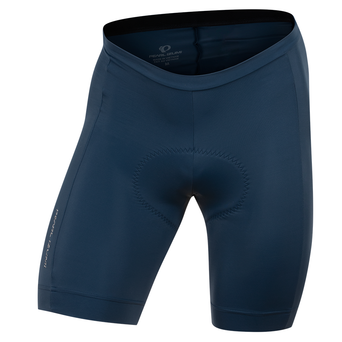As the foundation for any three-season kit, baselayers are crucial in maintaining comfort during cool and cold weather riding. By acting as a moisture-wicking, thermoregulating buffer, these technical undershirts establish a microclimate around the body, helping you stay impervious to the damp chill of humidity or the dry bite of winter. Choosing the right baselayer hinges on your anticipated level of exertion in the context of the weather, selecting a synthetic or merino blend construction, and properly pairing your baselayer with the rest of your ride outfit to meet the demands of the day. Read on for more on the benefits of baselayers and how to choose one for your ride.

Baselayers as Buffers
"Baselayers act as buffers," says PEARL iZUMi physiologist Robert Pickels.
He stresses that baselayers need to be skintight, so resist the urge to size up. "Baggie baselayers are a no-go. You will be leaving almost all of the benefits on the table with a frumpy or flappy baselayer," Pickels adds.
The key to being warm and comfortable is protecting the microclimate of the body from external elements, like cold and humidity while still creating an environment that sweat can pass through. Wearing a baselayer next-to-skin optimizes the microclimate around you, creating a thin shell of protection that still allows heat to escape.
Why We Sweat
Let's appreciate the function of sweating, which is a physiological response to dissipate heat and cool the body during harder efforts. Sweating is a highly effective cooling process for humans because of the latent heat transferred through evaporation. A lot of energy is consumed when sweat is transformed into a gas. But too much evaporative cooling can have ride-ending consequences in colder weather.


Three Types of Heat Transfer:
- Evaporative Transfer: cooling of body heat through sweat
- Convective Transfer: temperature transfer through an air current
- Conductive Transfer: temperature transfer through direct handoff
Pickels believes evaporative and convective are the best transfer options for cycling. A conductive transfer can be precarious on a ride when a layer loses its insulating property, like when a wind jacket sticks to your sweaty arm on a cold descent. The cold external air is rapidly pulling heat from your skin and moisture making for a chilling experience. Sometimes this conductive transfer happens faster than the other two options, and for a good reason.
The transfer efficiency is the rate in which heat is moved from the skin. To cool the body, the transfer of dissipating heat needs to occur as close to the skin surface as possible. Thus, the need for a tight-fitting baselayer. Evaporative and convective transfer is pulling heat away from your body to prevent it from overheating, which is great in the summer but maybe not so great when the temperatures drop.

Our technical cycling jerseys are adept at wicking and spreading moisture in sweltering conditions because we choose the breathable fabrics that leverage the properties of natural evaporative cooling. Plus, we get hundreds of wear-testers to push designs to the limit to confirm the fit and function. In extreme heat, a baselayer may not be appropriate for ideal transfer efficiency because the evaporation is further from your skin, and your jersey zipper is more effective.
For cold weather riding, baselayers provide extra insulation from on truly frigid days. And, while it’s best to take measures to avoid sweating altogether (like riding in a vest or jacket with a two-way zipper for quick venting), baselayers can also help quickly draw sweat away from the body so you don’t have time to get cold and clammy.

Synthetic or Merino
For all but the most sweltering rides, we recommend a Two-Plus layering strategy. Here, a baselayer acts as the foundation where critical moisture-wicking happens. Pull on a synthetic baselayer for cool but dry conditions, or if you’re planning a higher intensity outing. A baselayer made from our merino blend excels when humidity is high and/or temps are quite cold. Merino also has the benefit of still providing warmth even when wet, making it a safe bet for winter riding.
For a complete guide to layering, check out of System of Dress: A Guide to Riding in Any Conditions.






Comments